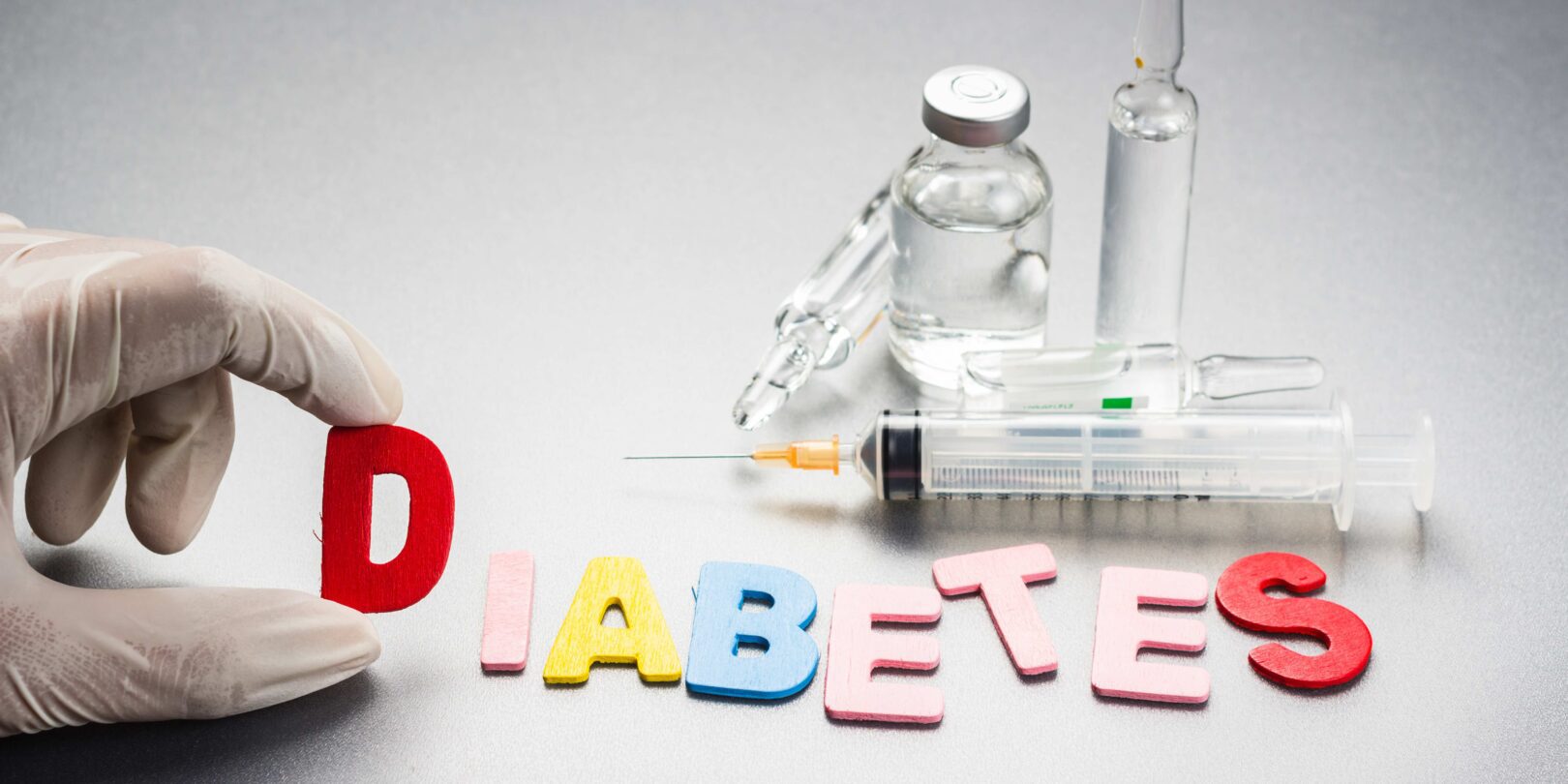
Diabetes is a chronic metabolic disorder characterized by elevated blood sugar levels, resulting from insufficient insulin production or ineffective use of insulin by the body. Type 1 diabetes occurs when the immune system mistakenly attacks and destroys insulin-producing cells, while Type 2 diabetes is often linked to lifestyle factors such as obesity and lack of physical activity. Common symptoms include increased thirst, frequent urination, and unexplained weight loss. If left untreated, diabetes can lead to serious complications such as heart disease, kidney failure, and vision problems. Management involves medication, lifestyle modifications, and regular monitoring of blood glucose levels.
SYMTOMS OF DIABETES

- Increased Thirst (Polydipsia)
- Frequent Urination (Polyuria)
- Unexplained Weight Loss
- Extreme Hunger (Polyphagia)
- Fatigue and Weakness
- Blurred Vision
- Slow Healing of Wounds
- Tingling or Numbness in Extremities
- Recurrent Infections
- Irritability and Mood Swings
TYPE 1 DIABETES

Type 1 diabetes is an autoimmune condition where the body’s immune system mistakenly attacks and destroys insulin-producing beta cells in the pancreas. As a result, the pancreas produces little to no insulin, a hormone crucial for regulating blood sugar. Typically diagnosed in childhood or adolescence, Type 1 diabetes requires daily insulin injections or infusion through a pump to manage blood glucose levels. The exact cause is unknown, but a combination of genetic and environmental factors is believed to contribute. Individuals with Type 1 diabetes must closely monitor their blood sugar, adhere to a balanced diet, and maintain a healthy lifestyle to avoid complications.
Type 2 diabetes is a metabolic disorder characterized by insulin resistance and impaired insulin production. Unlike Type 1 diabetes, it is often associated with lifestyle factors such as obesity, sedentary habits, and genetic predisposition. In Type 2 diabetes, the body’s cells become resistant to the effects of insulin, leading to elevated blood sugar levels. Initially, the pancreas compensates by producing more insulin, but over time, it may fail to keep up with demand. Management involves lifestyle modifications, including a healthy diet, regular exercise, and, in some cases, medications. Type 2 diabetes is more common in adults, though it is increasingly diagnosed in younger individuals due to rising obesity rates.


Gestational diabetes occurs during pregnancy when the body can’t produce enough insulin to meet increased demands. It poses risks to both mother and baby, increasing the likelihood of childbirth complications and the child developing obesity or Type 2 diabetes later. Management involves dietary changes and monitoring, with some cases requiring insulin. While blood sugar usually normalizes post-delivery, women with gestational diabetes face a higher risk of Type 2 diabetes later on.
Diagnosis: Diabetes is diagnosed through blood tests measuring fasting glucose levels, oral glucose tolerance, or glycated hemoglobin (HbA1c). Symptoms like increased thirst, frequent urination, and unexplained weight loss also contribute to diagnosis.
Treatment:Diabetes treatment involves lifestyle changes such as a balanced diet, regular exercise, and weight management. Medications, including oral drugs or insulin therapy, help regulate blood sugar levels. Routine monitoring, patient education on self-management, and early intervention contribute to effective management. Prevention focuses on minimizing risk factors to reduce the likelihood of complications.

Balasana, or Child’s Pose, is a yoga posture that can offer several benefits for individuals with diabetes:
-
- Stress Reduction: Balasana promotes relaxation by calming the mind and relieving stress. Stress management is crucial for people with diabetes, as stress hormones can affect blood sugar levels.
- Improved Digestion: This resting pose gently compresses the abdomen, massaging the internal organs and aiding digestion. Better digestion can contribute to more stable blood sugar levels.
- Lowering Blood Pressure: The gentle nature of Balasana may help lower blood pressure, which is essential for overall cardiovascular health, a concern for many individuals with diabetes.
- Improved Circulation: The pose involves sitting back on the heels with the arms stretched forward, promoting circulation and reducing tension in the lower back.

Vakrasana, or Twisted Pose, is a yoga posture that may offer benefits for individuals with diabetes:
-
- Stimulates Abdominal Organs: The twisting motion in Vakrasana helps massage and stimulate the abdominal organs, including the pancreas. This stimulation may potentially enhance the organ’s function in insulin production.
- Improved Digestion:Twisting poses like Vakrasana can aid digestion by compressing and releasing the abdominal organs. Improved digestion may contribute to better blood sugar control.
- Spinal Flexibility: Vakrasana involves twisting the spine, promoting flexibility and mobility. This can be beneficial for individuals with diabetes, as it supports overall physical well-being.
- Stress Reduction: The focused breathing and meditative aspects of yoga can help reduce stress levels. Stress management is important for people with diabetes, as stress can impact blood sugar levels.
- Enhanced Blood Circulation: The twisting action in Vakrasana may help improve blood circulation, benefiting overall cardiovascular health.
Ustrasana, or Camel Pose, is a yoga asana that can provide potential benefits for individuals with diabetes:
-
- Stimulates the Pancreas: Ustrasana involves a backward bend that may stimulate the pancreas, potentially supporting insulin production and blood sugar regulation.
- Enhances Digestion: The stretching and compressing actions in Camel Pose can massage the digestive organs, promoting better digestion and nutrient absorption.
- Spinal Flexibility: Ustrasana involves a deep backward bend, enhancing flexibility and strength in the spine. This can contribute to overall physical well-being.
- Increases Blood Circulation: The pose opens the chest and heart area, promoting better blood circulation. Improved circulation can benefit cardiovascular health, a concern for many individuals with diabetes.



